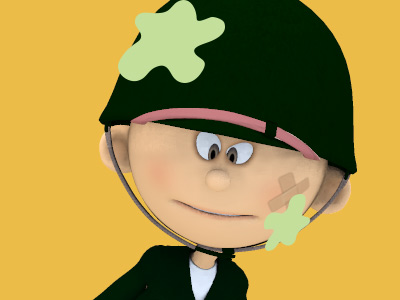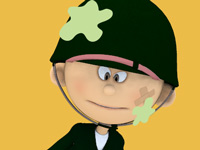Paintball

Paintball
Paintball is a game developed in the 1980s in which players eliminate opponents from play by hitting them with dye-filled, breakable, oil and gelatin paintballs, or pellets, usually shot from a carbon dioxide or compressed air (Nitrogen) powered “paintball marker”. The game is regularly played at a sporting level with organized competition involving major tournaments, professional teams, and players. Paintball technology is also used by military forces, law enforcement, para-military and security organizations to supplement military training, as well as playing a role in riot response, and non-lethal suppression of dangerous suspects.
Games can be played on indoor or outdoor fields of varying sizes. A game field is scattered with natural or artificial terrain, which players use for tactical cover. Game types in paintball vary, but can include capture the flag, elimination, ammunition limits, defending or attacking a particular point or area, or capturing objects of interest hidden in the playing area. Depending on the variant played, games can last from seconds to hours, or even days in scenario play.
The legality of paintball varies among countries and regions. In most areas where regulated play is offered, players are required to wear protective masks, use barrel blocking safety equipment, and game rules are strictly enforced.
Tournament Format
The nature and timing of paintball events are specified by the league running the tournament, with the league also defining match rules – such as number of players per team (anywhere from 3-7 players per team), or acceptable equipment for use. The number of matches in a tournament is largely defined by the number of available teams playing. However, the NSL offers non-tournament game play where a more traditional game day format has been adopted. Two teams face off at a set time and play only one game per game day in the season as beginners play a 24-minute game and Amateur and Professional play a 32-minute game, both requiring 90 minutes to resolve.
A match in a tournament is refereed by a judge, whose authority and decisions are final. Tournament rules can vary as specified by the league, but may include for example – not allowing players to use devices to communicate with other persons during a game, or not allowing players to unduly alter the layout of terrain on the field. In contrast to a casual game designed for fun, a tournament is much stricter and violations of rules may result in penalties for the players or entire teams.
Though tournament paintball was originally played in the woods, speedball became the standard competitive format in the 1990s. The smaller fields made use of artificial terrain such as bunkers, allowing symmetrical fields that eliminate terrain advantages for either team; woodsball fields having no such guarantee. Most recently, fields using inflatable bunkers, tethered to the ground with stakes, have become standard for most tournament formats; the soft, yielding bunkers reduce the occurrence of injuries, the bunkers deflate to store in a compact space and anchor to the ground with tent stakes, allowing for temporary fields to be set up and torn down with less impact on the ground underneath, and the arrangement of bunkers can be easily re-configured to maintain novelty of play or to simulate a predetermined field layout for an upcoming event.
SPORTS

RESOURCES
This article uses material from the Wikipedia articles "Paintball" and "Player positions (paintball)", which is released under the Creative Commons Attribution-Share-Alike License 3.0.
© Stories Preschool. All Rights Reserved.








